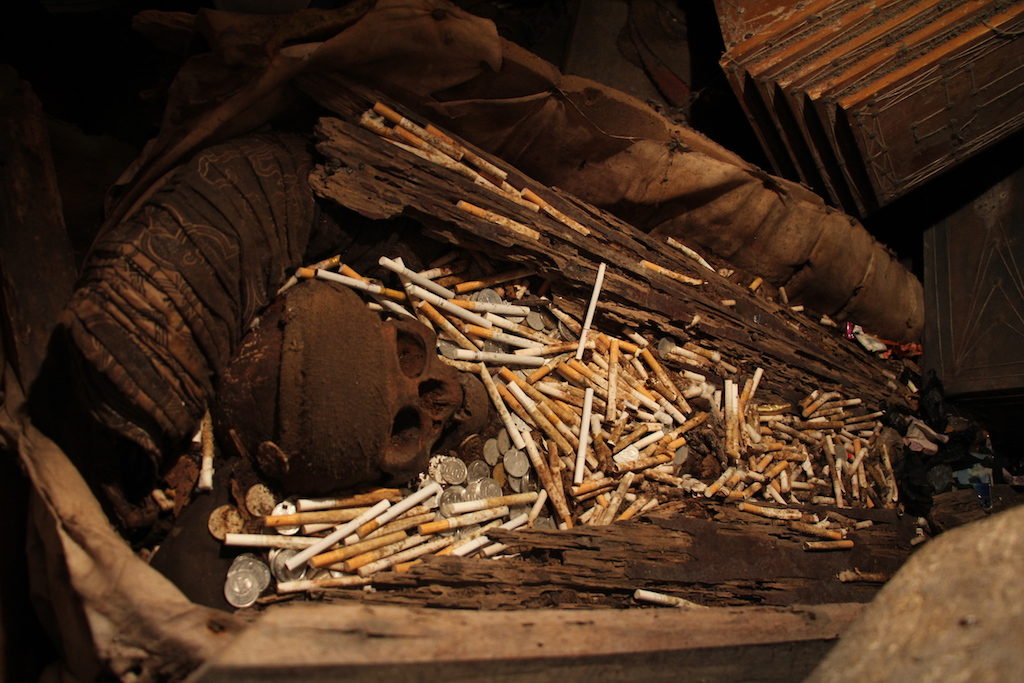Tana Toraja
Few years ago I read an article in National Geographic about Tana Toraja. It painted a picture of a mythical, inaccessible land where people have a completely different approach to death. I did not know how I am going to get there but it was a hot spot on our route through Indonesia.
It took us two days from Yogyakarta – first a train to Surabaya, then a flight to Makassar on Sulawesi island (it was actually much cheaper than a direct flight from Yogya), then on the next day a 9-hour bus ride from Makassar to Rantepao. Of course it turned out that it is not an inaccessible land anymore. The bus was nice, clean and air-conditioned, with reclining seats. Rantepao looks like an Indonesian Zakopane with local businesmen offering you transport, a guide, attending a funeral ceremony and god-knows-what-else the moment you jump out of the bus.
Speaking about God – it is amazing that there is a different religion dominating each of the islands we visited. Sulawesi is an interesting mix of christianity, islam and animalistic beliefs.
In the Rantepao area there are many villages with traditional houses and granaries fitting beautifully into a ladnscape of rice terraces. There are also cemeteries carved within stone walls of nearby mountains. It takes a few days to see all of that. On our first day we decided to visit these you can reach on foot. On Sulawesi, similar to other islands, walking is not very popular, we draw attention almost immediately, though not as much as before. The locals told us stories of Polish people who go everywhere on their own and do 2-3 day treks to the mountains. You can feel a national pride for a moment.
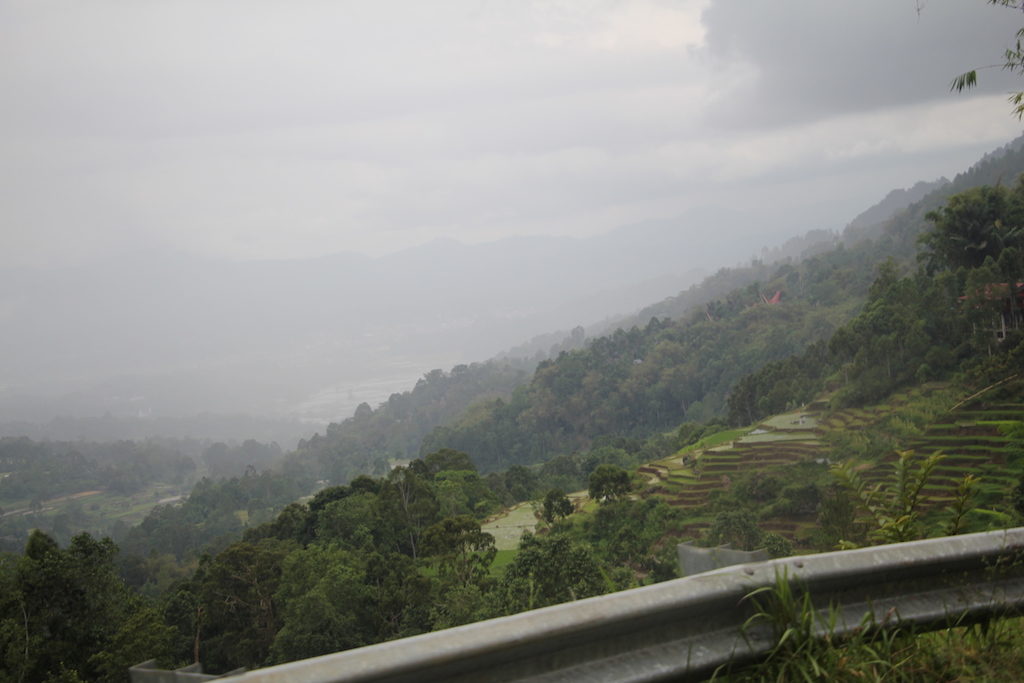
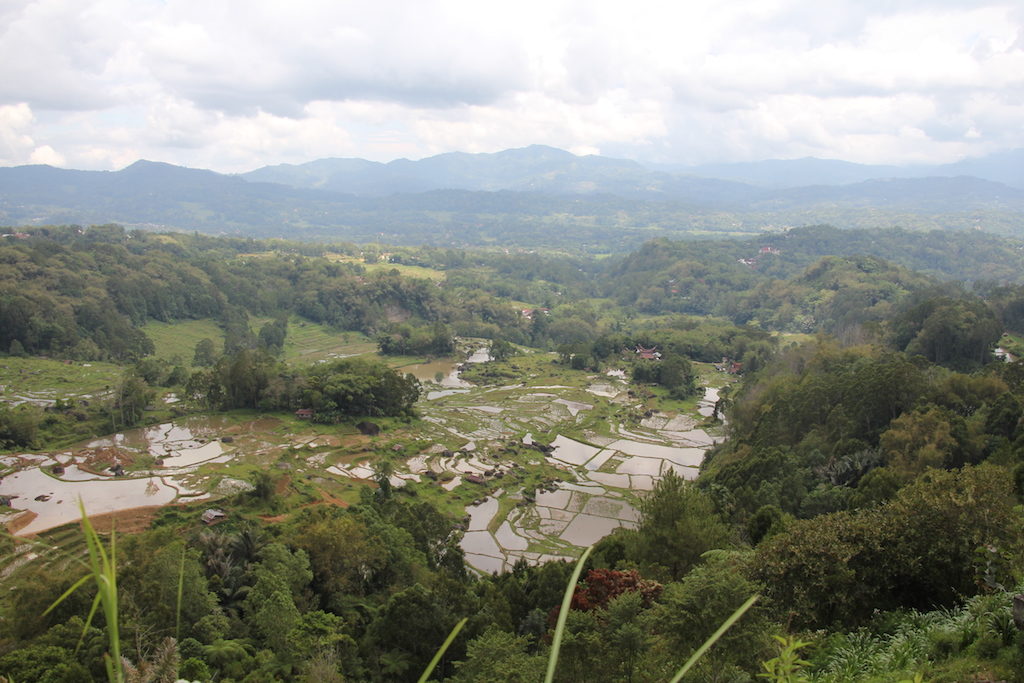
Avoiding main roads we ended up in the middle of a rice field (Czyzu w Ryzu strikes back) where I managed to slip on mud and… You can imagine the joy I felt when I realized that my shoes are full of water and I look like diving in poo. Knowing that there were few cows in the field and that cow-smell surrounded us, it is quite possible it was not only mud. What an adventure! Thanks God rice fields also have water. Brown, but still water so I managed to clean myself to some extent.
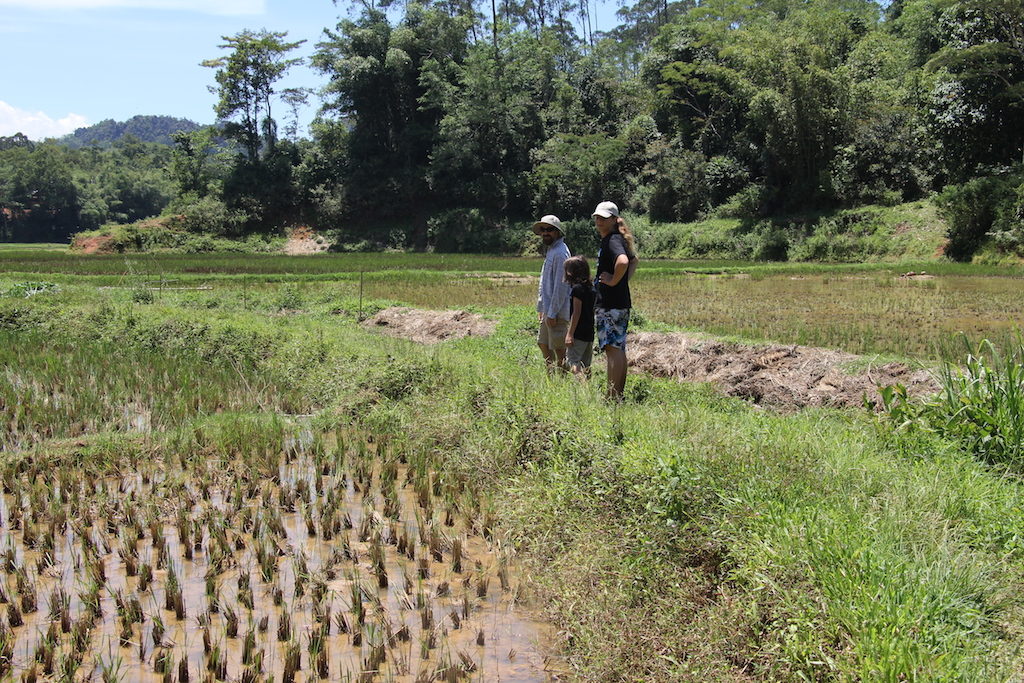
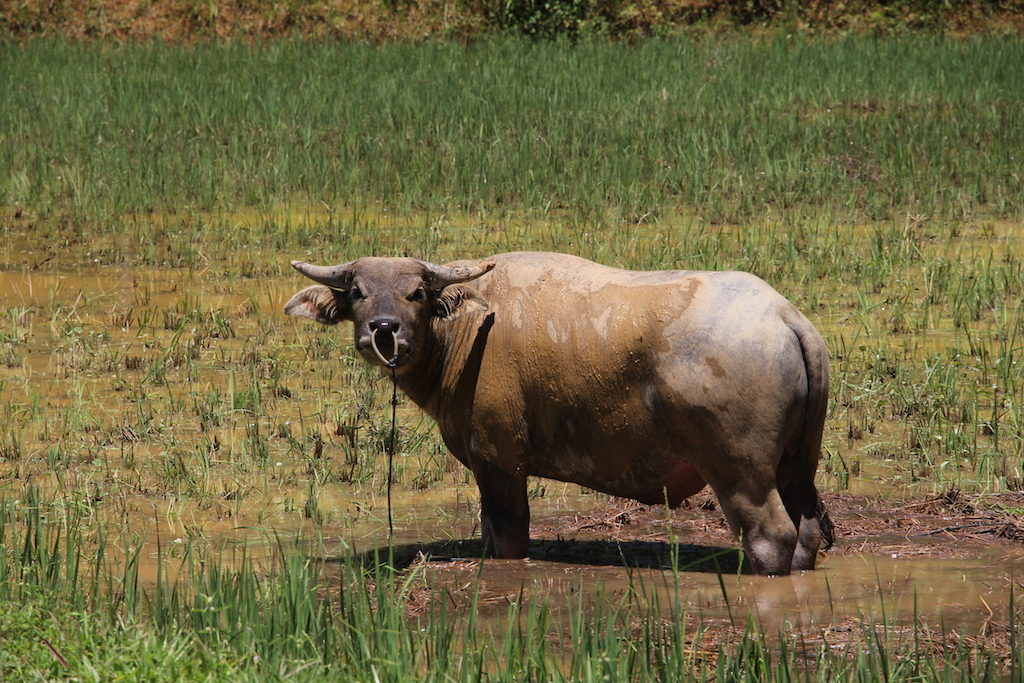
Toraja houses and granaries with very characteristic roofs are decorated with beautiful ornaments usually in the shape of buffalo heads or cuckoos (they say that the shape of the roof is a honor to ancestors who came to Sulawesi on boats – for me they more resemble buffalo horns). Our guide explained that the Toraja people use 4 colors which have special meaning to them: black – death, red – life, yellow – blessing, white – purity and innocence. Their decorated houses have to be oriented so that the front of the house faces north. All ceremonies related to life (i.e. marriage) are linked to east (so they are celebrated when the sun rises), while those related to death are linked with west (and so celebrated in the afternoon, when the sun is heading westward (and this way the saying that the western civilization is a culture of death gets a new meaning). The front walls of some houses are decorated with buffalo horns – this is a reminder of the animals that were sacrificed during the funeral. I think I am not ready to watch this. The thought of aminals being slaughtered, the smell of bood and death in this heat makes me feel like fainting.
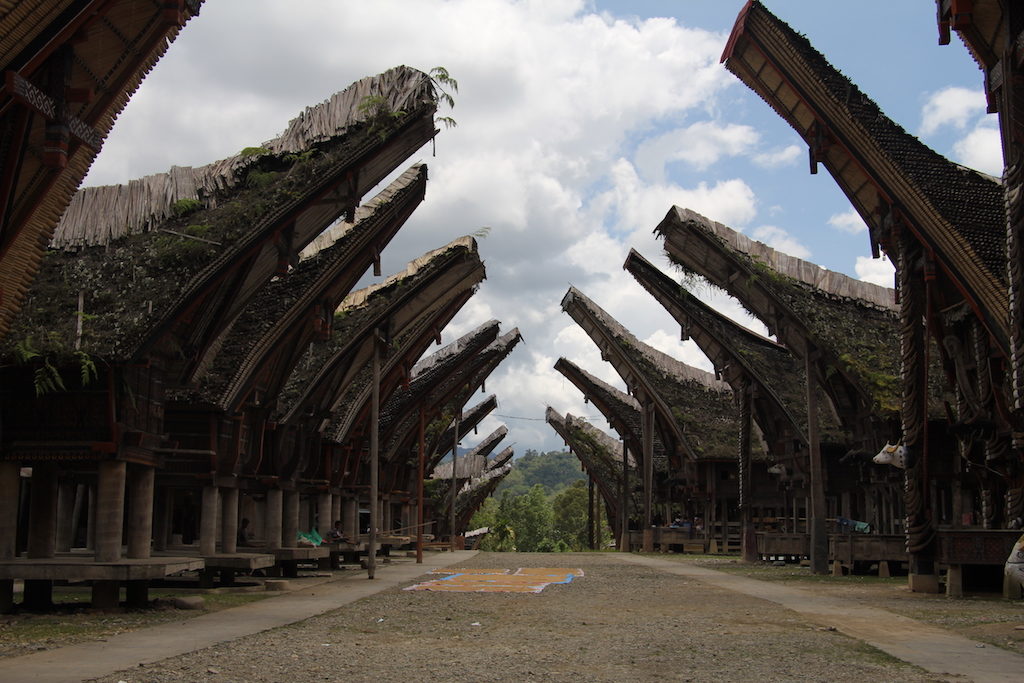
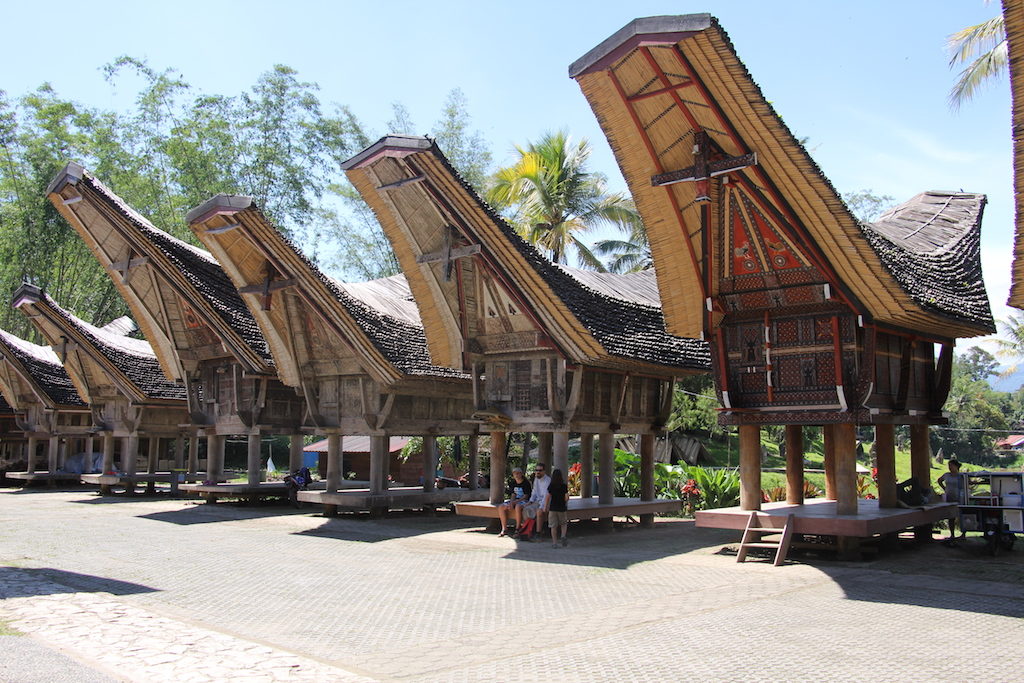

Funeral is the most important ceremony in Torajan’s life. The more important person dies, the bigger the funeral has to be and the more animals have to be slaughtered. Families save money for years to be able to afford a proper funeral. During this time the body stays at home (in a specially designaed room in the southern end) properly mummified with formalin. They treat it as a sick person (i.e. bring him food). Each funeral is attended by many people and everyone has to bring something. The more you bring the more you will get on your own funeral. People believe that the ghosts of the sacrificed beings help the soul to get to the other side. Without this sacrifice and offering, the soul will wander on earth and disturb the living. Our guide Henrick told us that before Christianity spread here (brought by the Dutch who colonized the island) the Toraja were sacrificing humans.
Old cemeteries are hidden in the mountains, carved in rock or in caves. Each chamber can accommodate up to 8 bodies and is used by one famliy. Some graves are hanging very high above the ground, equipped with stuff that can help on the other side like money or cigarettes (Indonesians smoke like crazy). Other graves can be hidden deep in graves or is small houses / mausoleums. Rich people can also afford a tau-tau: a human-size statue depicting the deceased. There are also stone monoliths (think Stonehenge) or burial trees (for children who died before having first teeth). The Toraja believe that burying small children in the ground would bring bad crops. Such children are buried in embryo position in a hole carved in tree trunk. It cannot be any tree – it must have white juice, like mother’s milk (which led me and Tytus to immediately associate it with Orson Scott Card and the story of pequeninos).
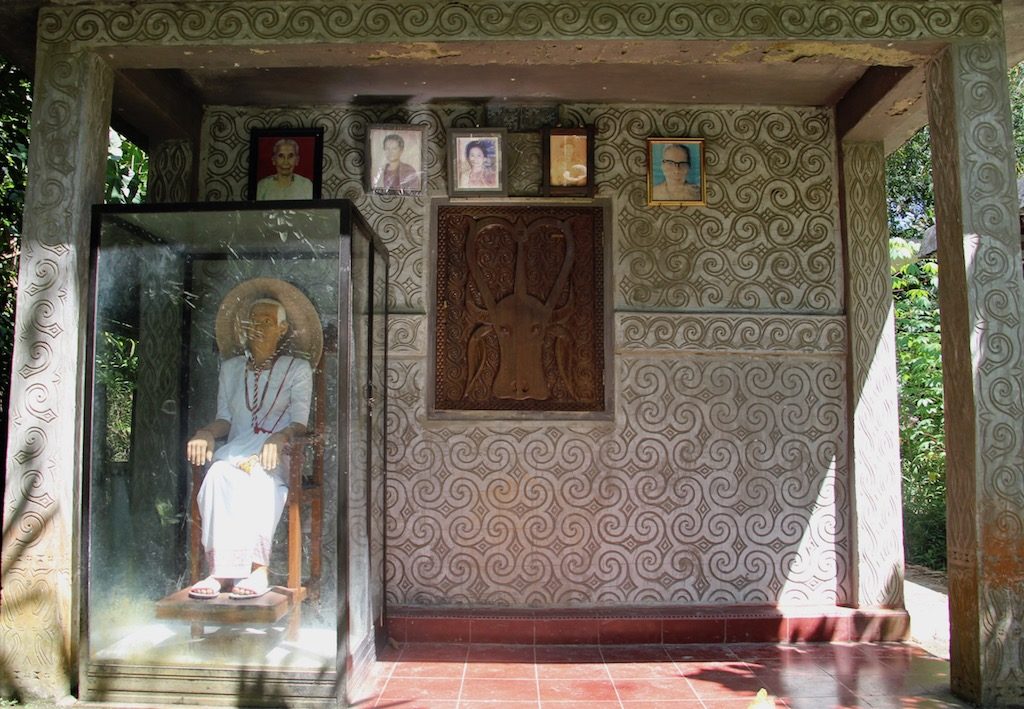
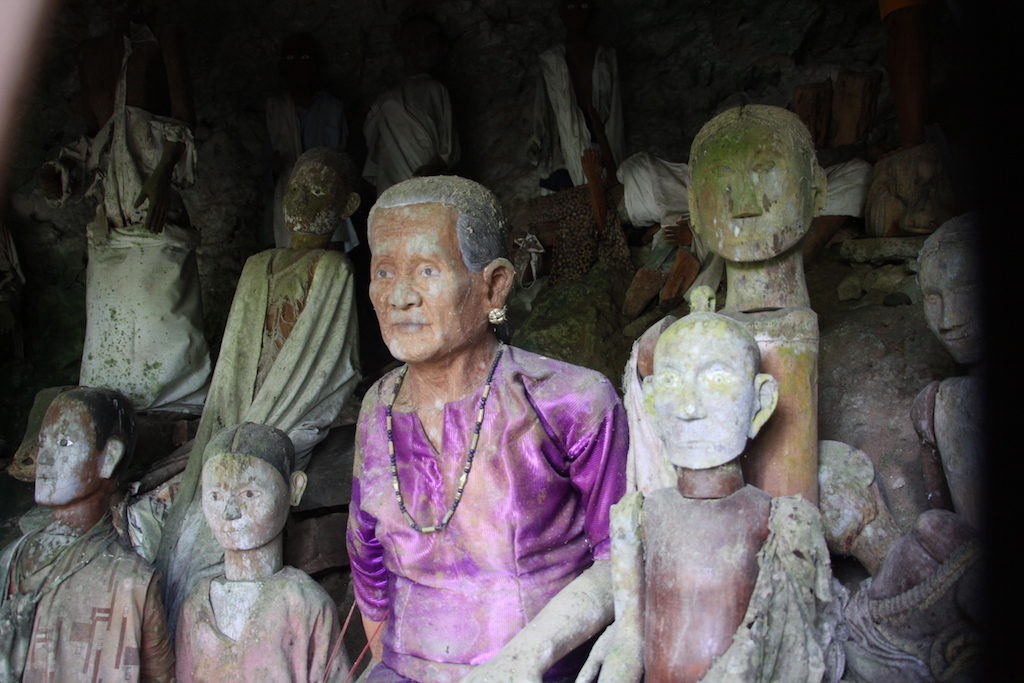
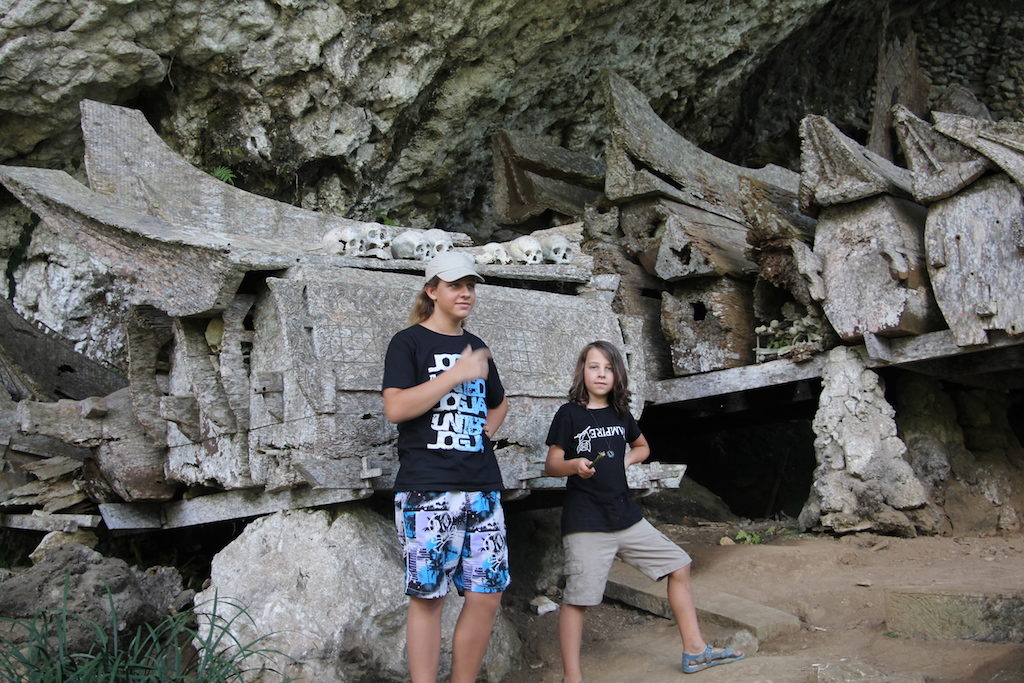
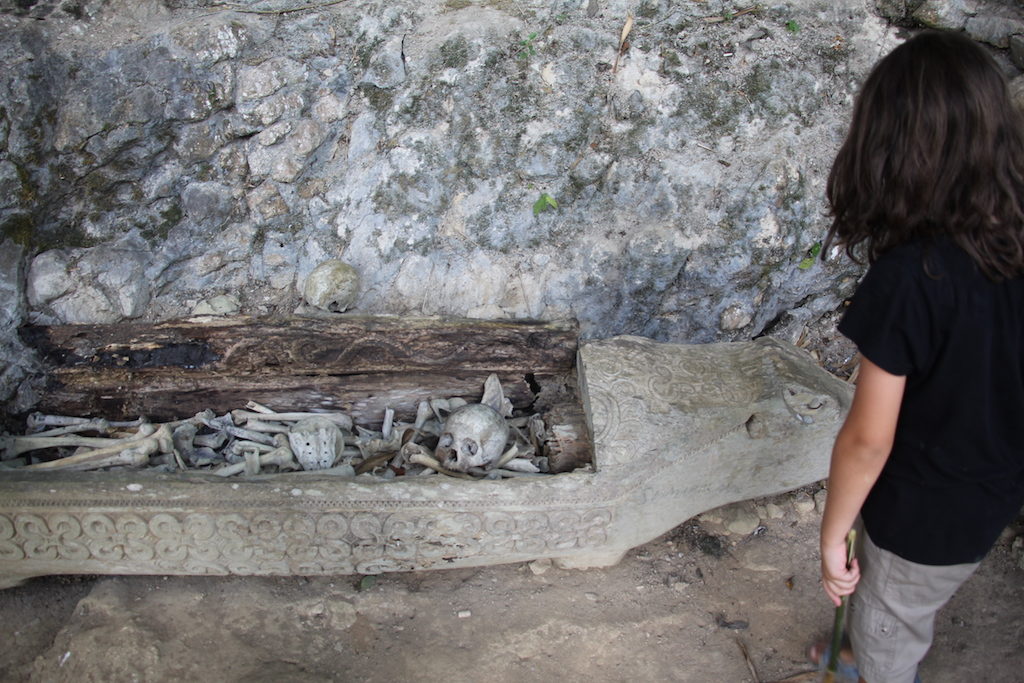
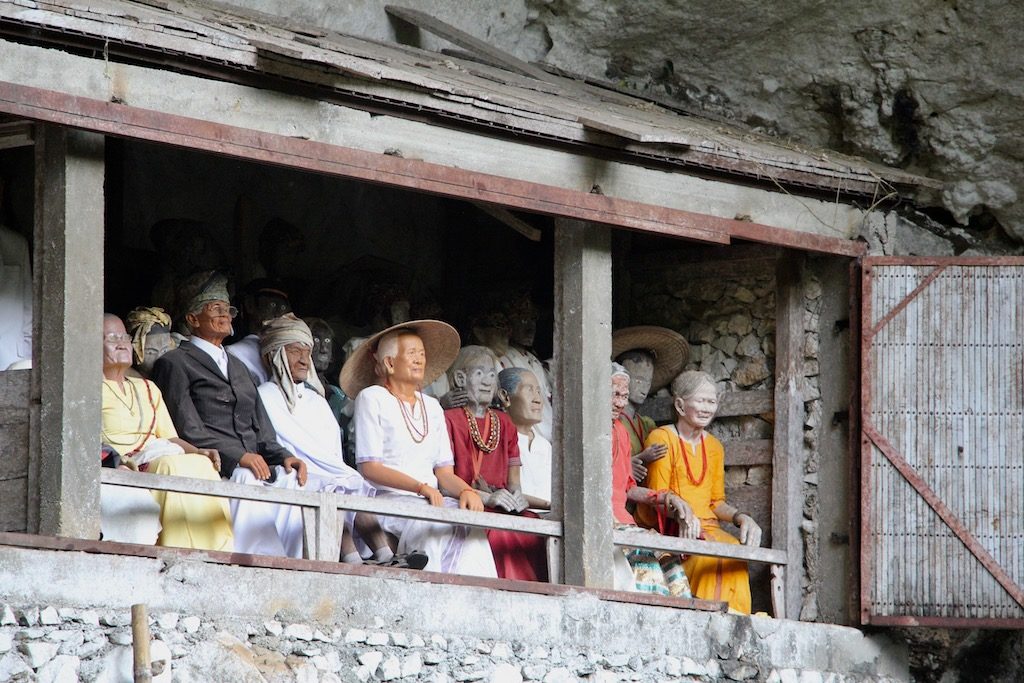
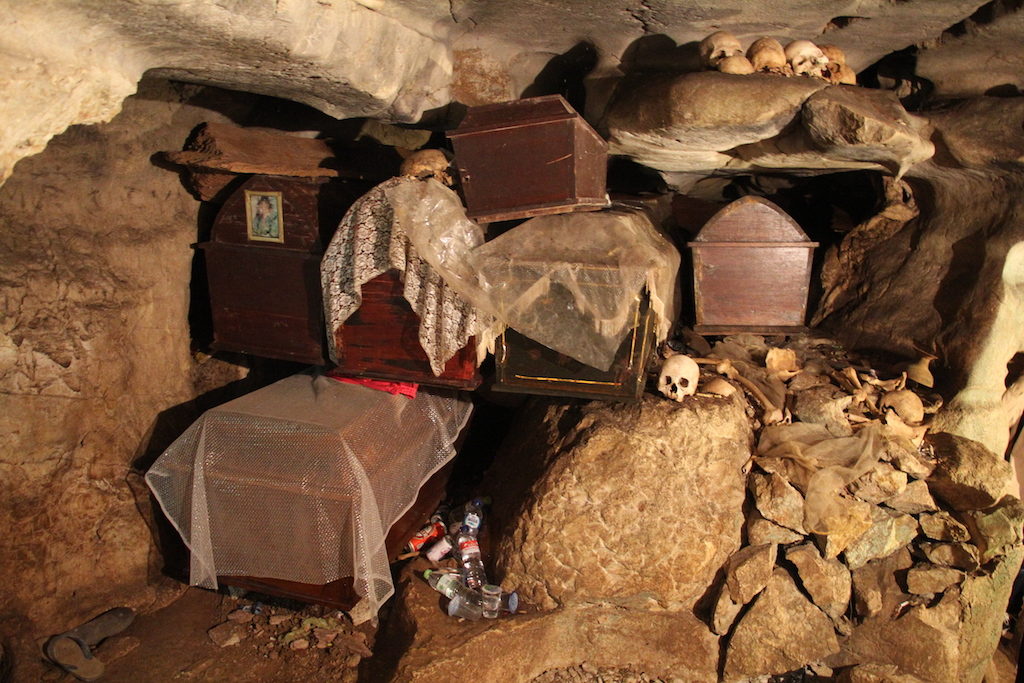

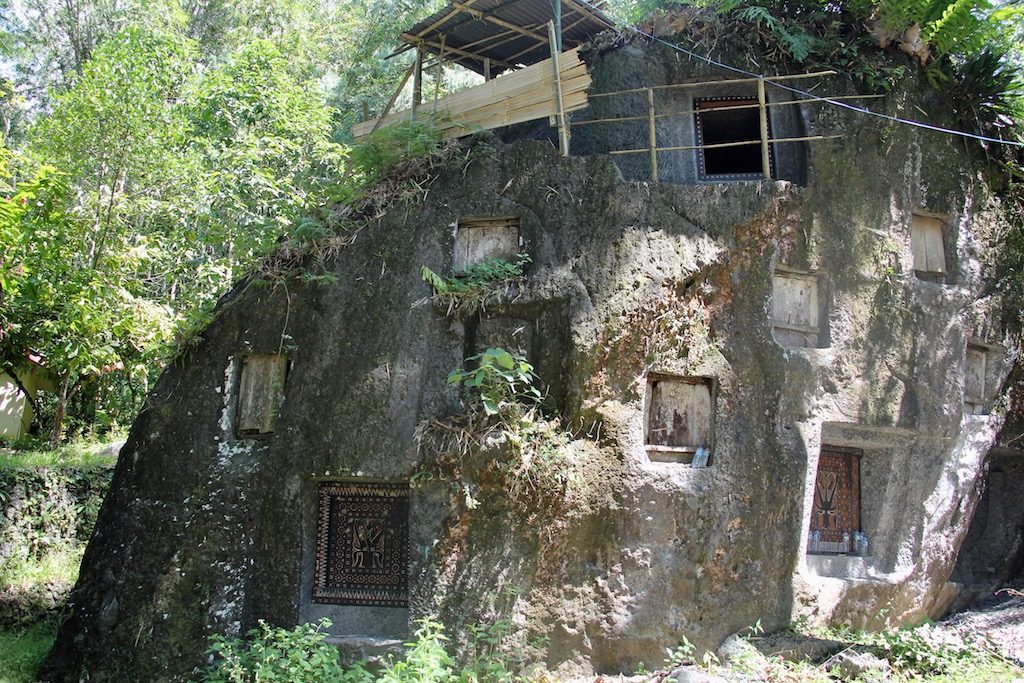
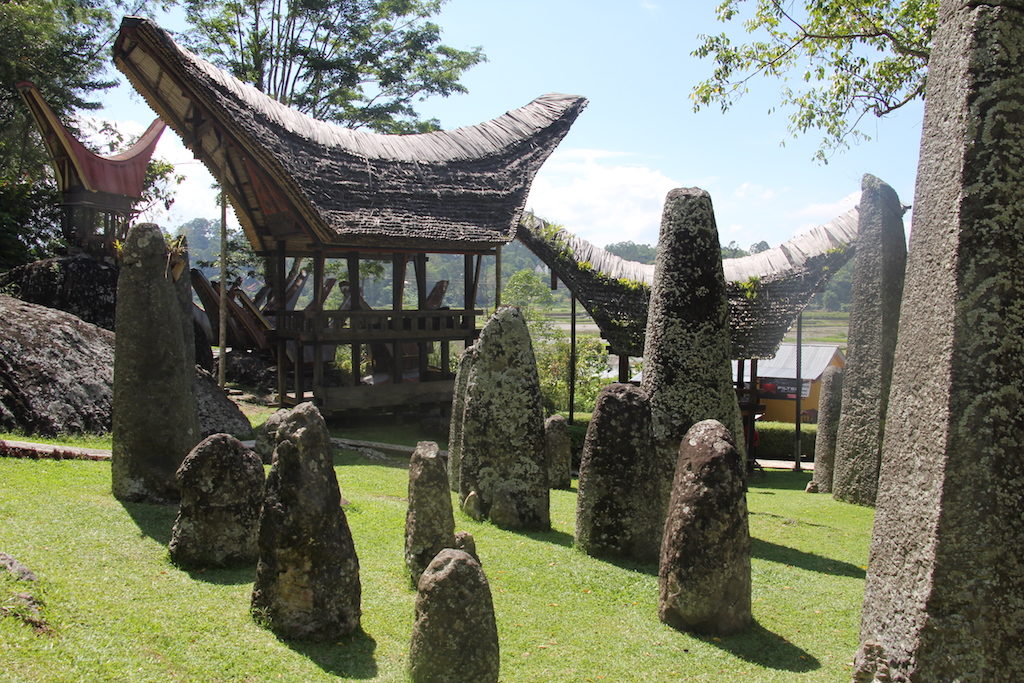 Skipping the ritual sacrifice of animals, Torajans’ attitude towards death is much closer to my heart than western approach, when death is a taboo, full of mourning, low voices and sterile spaces. Keeping a dead body at home helps tame death and treat it as part of our life.
Skipping the ritual sacrifice of animals, Torajans’ attitude towards death is much closer to my heart than western approach, when death is a taboo, full of mourning, low voices and sterile spaces. Keeping a dead body at home helps tame death and treat it as part of our life.
Happy Halloween folks!
